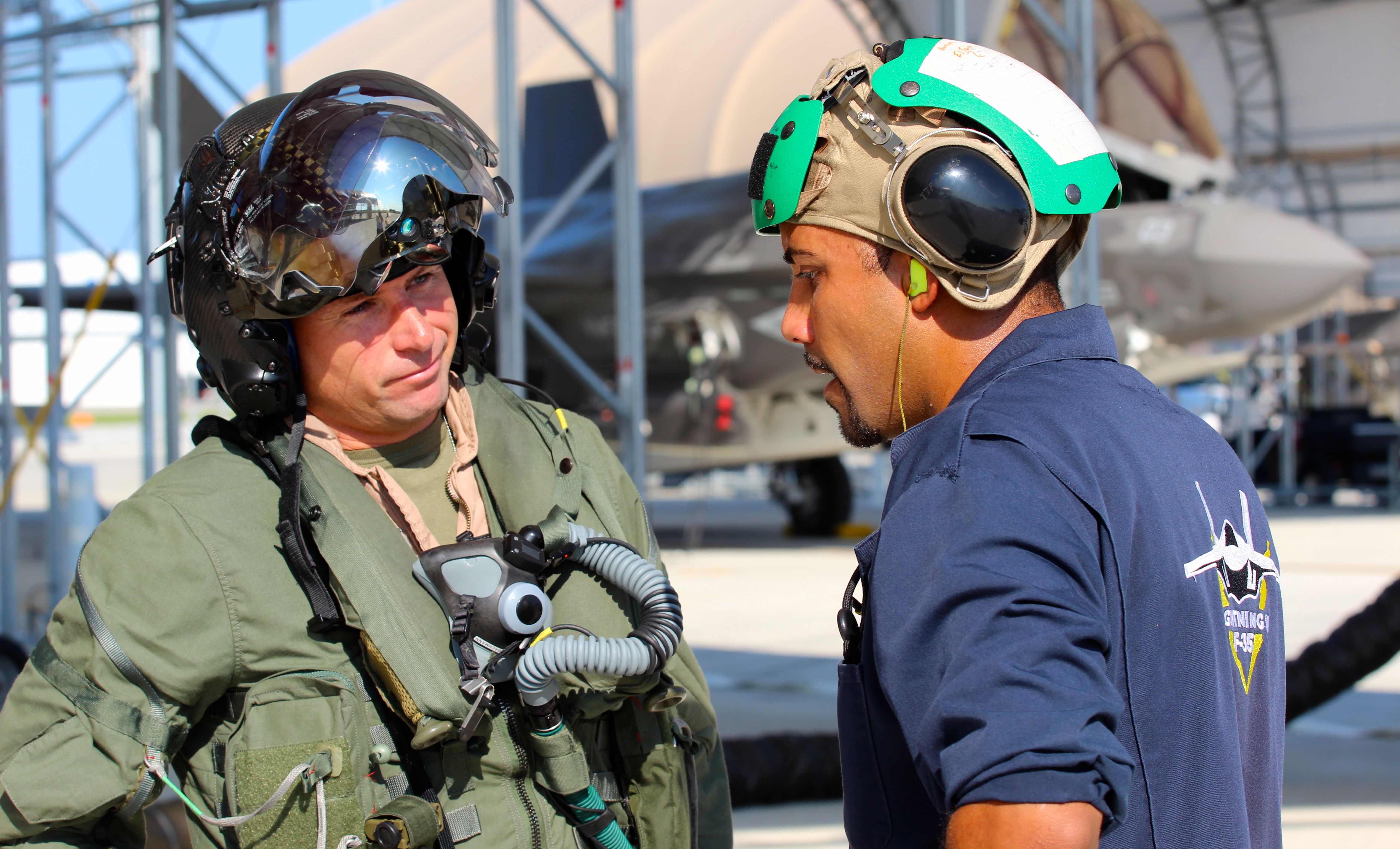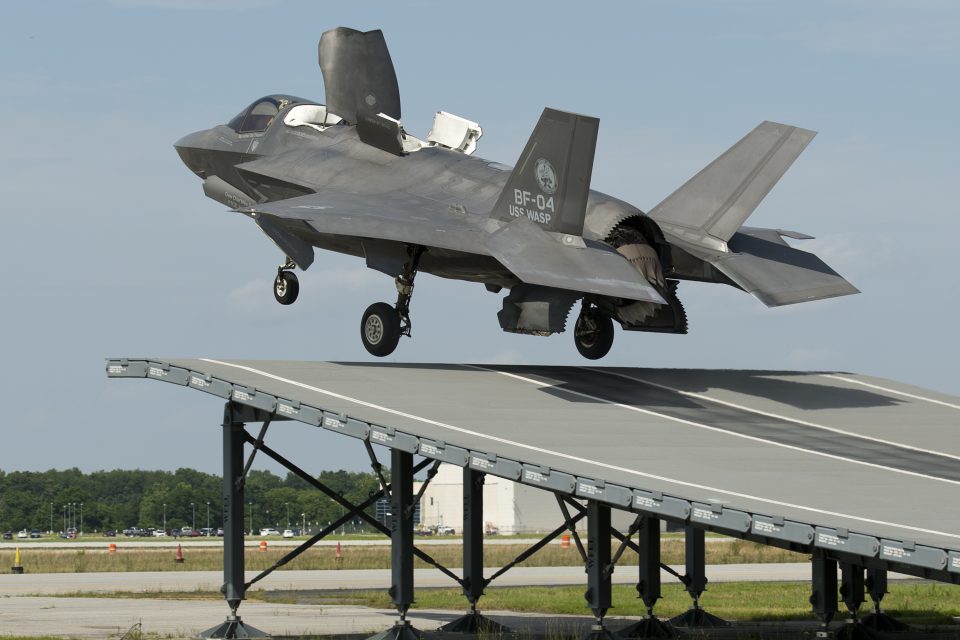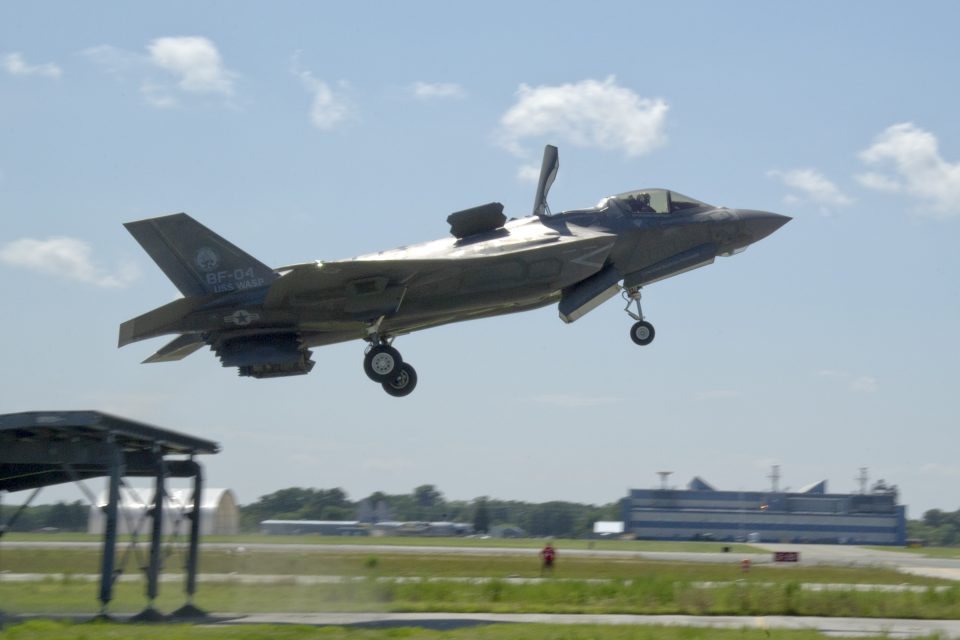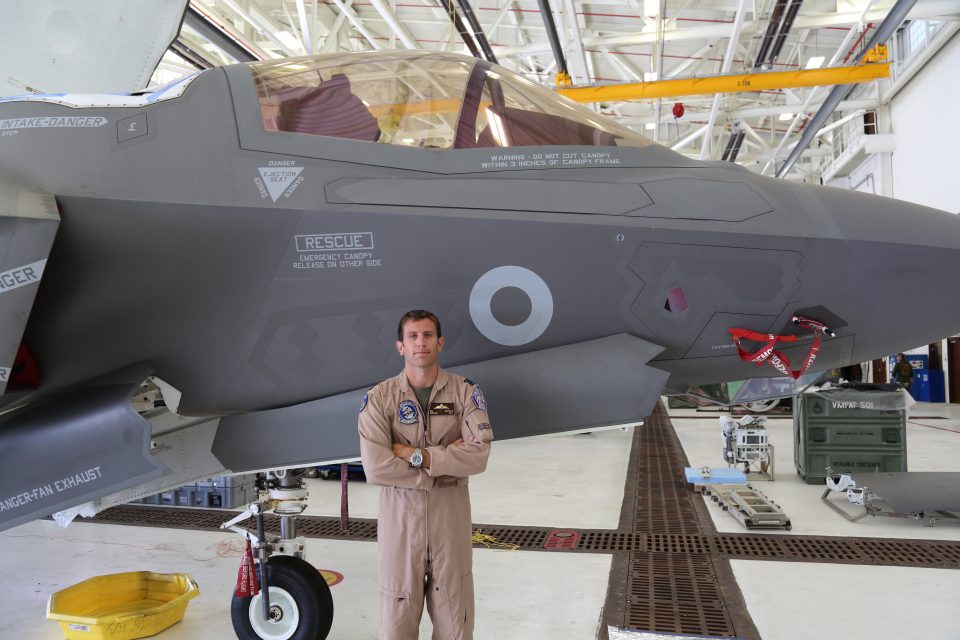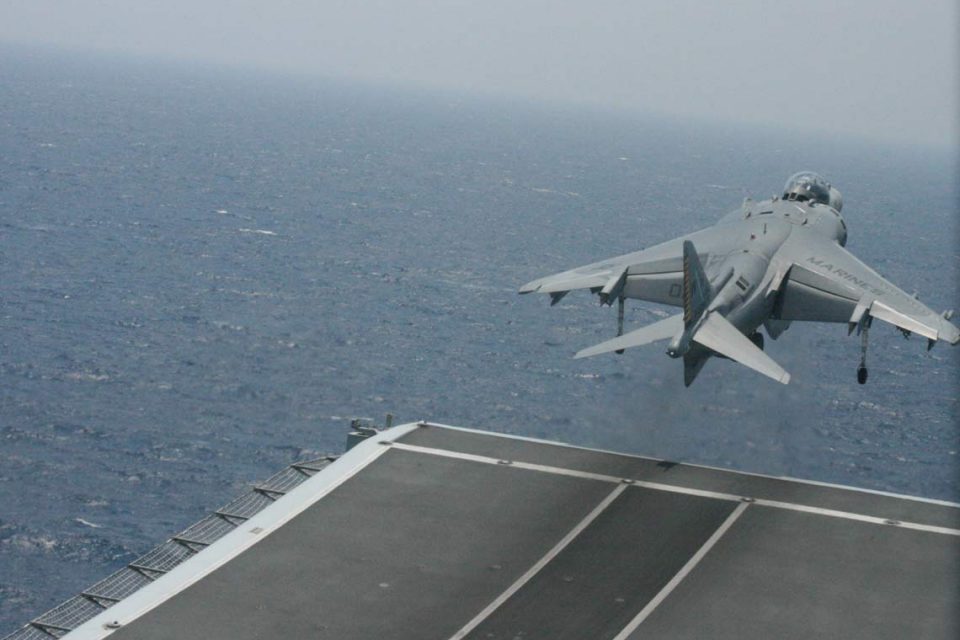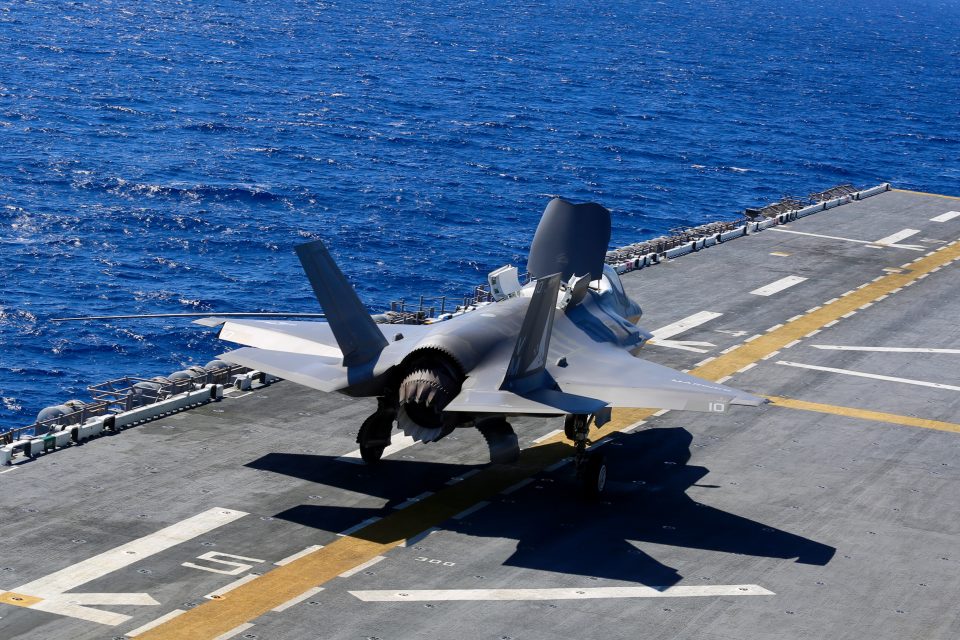2015-08-06 By Robbin Laird and Ed Timperlake
When Secretary Gates decided to put the F-35B on probation and Senator McCain became his powerful echo chamber we responded at the time on the pages of Breaking Defense that these actions were misguided.
We have spent many hours with the pilots, maintainers, builders, designers, and testers of the aircraft, and came to a very different conclusion:
“The F-35B – the Marines vertical takeoff version of the Joint Strike Fighter — is just one example of unique game changers.
It permits a significant increase in strategic and tactical potential across a force, across a fleet, and leverages new platforms being introduced to shape an innovative future.”
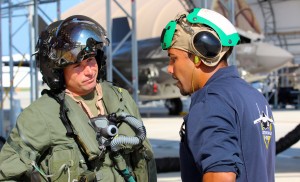
And with regard to Senator McCain, our judgment was that he was misfiring in his criticism, and really not taking the time to understand the impact of the USMC leadership into the future, which they were providing for the US services and the allies.
“The JSF is a fleet, not a single plane.
The senator never mentions the allies to whom the U.S. has committed to produce this aircraft soon and in manufactured numbers.
The allies are completely missing in the senator’s worldview, which is so Inside the Beltway.
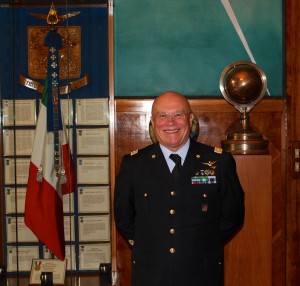
The F-35 is part of enabling a coalition of like-minded states and of shaping a global fleet capability.
Notably, allies worldwide are building ships upon which the F-35B could land and operate.
The Italians have a carrier upon which the F-35B will land. And the senator apparently wishes to put our ability to work with the Italians and their generous hosting of the USN and Air Force in Italy at risk.”
When critics of the program convinced Secretary Gates to put the F-35B on probation in 2011 the Marines never wavered, even in the face of mounting criticism and diminishing support.
According to LtGen (Retired) George Trautman, the Marine Corps Deputy Commandant for Aviation at the time,
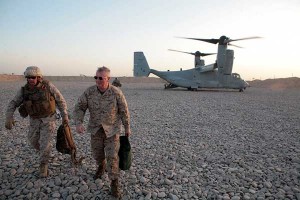
“We knew that the problems with the aircraft were relatively minor and could be easily corrected.
We were also confident that the UK would eventually reverse their hasty decision to opt for another JSF variant.
For the Marine Corps and our allies, the F-35B represents an exponential increase in operational capability and there never was a moment when we considered taking a different TACAIR path.”
Now with the decision by the Commandant of the USMC to declare the F-35B operationally ready, one could continue to focus on the plane or the impacts of the plane moving forward on the other US services and the allies.
The declaration of IOC is not an in and of itself event; it is the start point on a decade ahead of fundamental transformation enabled with the emergence of an F-35 global fleet.
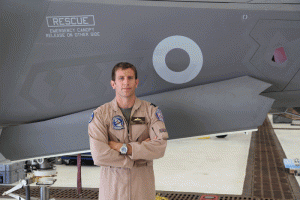
The global fleet of F-35s will be the first generation for building a foundation for a fundamental change in the way air power operates in overall combat concepts of operations.
It is not in and of itself a single aircraft platform; it is about what an integrated fleet of F-35s can deliver to TRANSFORM everything.
The decade ahead will be very innovative.
Squadron pilots and all combat warriors, at all ranks, can leverage what they learn and then apply those lessons to reshaping the force over and over.
The impact of an integrated fleet of F-35s with fused internal pilot combat data and also distributed information out, will allow the US and its allies to rethink how to do 21st century air-enabled operations.
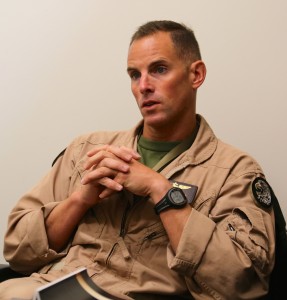
Each F-35 will be able to network and direct engagements in 360-degrees of 3-dimensional space by offloading tracks to other air/land/sea platforms including UAVs and robots.
The Marines in declaring IOC become the trailblazers for significant change.
Core US allies soon to go IOC with their F-35B certainly see the Marines in that light.
A key example of course is the Royal Air Force, which is training with the Marines in the United States, and will build their first operational squadron in the United States and then fly to the UK in 2017 for embarking on their new carrier thereafter.
The Specifics of the UK Case
At Beaufort, like at Luke AFB between the USAF and the RAAF, planes are pooled. As Squadron Leader Hugh Nichols from the RAF and based at Beaufort noted: “Our aircraft are pooled with those of the Marines, and we fly aircraft in the pool not just the UK jet.”
He then went on to note that: “The Marines have done a fantastic job working through previous program difficulties and have blazed a trail towards bringing this next generation capability into service. They are Marines, and if anything gets in the way, they deal with it.
Working with them will clearly ensure that we are ready for the Queen Elizabeth. And the pooling agreement is important in terms of cross learning. Our young maintainers are working with Marine Corps maintainers and they are learning to work through different procedures and protocols to learn how to maintain a common airplane.”
The F-35 global enterprise is a key enabler of the use of collaborative resources.
The Brits are training at Beaufort on F-35 equipment at the base – including the simulators – as their own facilities are stood up in the UK and the squadron grows before returning to the UK to get ready to work with the HMS Queen Elizabeth.
The Brits are integrated members of the squadron and the Marine Corps and British maintainers are learning together how to adapt their specific maintenance protocols – which are different – to a common airplane.
Obviously, this will play real dividends down the road in terms of being able to cross deploy at sea.
And the Brits recognized that a software upgradeable airplane requires continuous upgrade in order to stay at the leading edge.
They are keeping a permanent detachment at Edwards AFB to remain engaged in the lifetime modernization envisaged for the F-35 global fleet.
And the preparation for the F-35 coming to the UK has led to new working relationships with the Dutch, and Norwegians to mention two core allies for the UK in a tense neighborhood, undergoing pressure from the Russians.
As Squadron Leader Hugh Nichols highlighted: “The majority of the operating areas big enough to fully utilize this aircraft will be out over the North Sea, so I can see us using this to our advantage by operating with our Northern European allies.
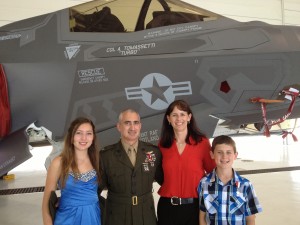
I would anticipate that there will be a lot of cooperation with Norwegians, Danes or the Dutch as we bring this exciting aircraft into service on European soil.
At the end of the day, it doesn’t matter if you in an A, a B or C, once airborne, the mission systems are the same.”
Such working relationships can be leveraged to reshape key challenges such as Baltic defense.
The Norwegians, the Dutch, and possibly the Danes and the Finns will all have F-35s and a completely integrated force which can rapidly be inserted without waiting for slower paced forces has to be taken seriously by Russia.
There is no time gap within which the Russians can wedge their forces, for Norway and Denmark are not likely to stand by and watch the Russians do what they want in the Baltics.
With the integrated F-35 fleet, they would need to wait on slower paced NATO deliberations to deploy significant force useable immediately in Baltic defenses.
Coming to the Pacific
The first USMC squadron is slated to go to the Pacific and there is no theater where the demand for the aircraft will be greater or the demand side higher in the first decade of its service life.
The US services and the allies view the plane as a means to an end – combat dominance via distributed operations in a very demanding and high-end theater of operations.
In a recent visit to Honolulu, visits to both MARFORPAC and PACFLEET provided insights into how the senior leadership of the Marines and PACFLEET see the coming of the aircraft to their Area of Operations.
In an interview with Deputy MARFORPAC at the end of July 2015, Brigadier General Mahoney highlighted that the F-35 was not a silver bullet aircraft, but a core asset which the Marines in the Pacific would wring out its capability and empower the entire re-structuring of their forces in the Pacific.
“With IOC I hope we can stop talking as much about a platform and what it can do as airplane and continue hammer and tongs with the business of true 5th generation integration across the warfighting domains.
Our ability, as a Naval Expeditionary Force, to sense, visualize and understand a hugely complex environment, with F-35 as a critical transformative enabler, carries a significant competitive advantage.”
And certainly, the coming of the F-35B to the surface navy is viewed as re-shaping what an amphibious group can do, and which in turn allows other assets, surface and sub-surface to evolve their own modernization efforts to contribute to what the USN calls distributed lethality in the Pacific.
And it cannot be overlooked that as Marine pilots learn how to successfully fight the F-35B since some Marine Squadrons will also have the USN Carrier version, the F-35C, the learning curve for large deck carrier air group modernization will also be in work.
The question of the way ahead for the USN in the Pacific was discussed during the visit to Hawaii with Vice Admiral (Select) Aquilino.
In his current position, he is at the vortex of the operational capabilities and deployment of the fleet, and is positioned to understand the dynamics of shaping strategy up against the ongoing challenges and threats in the Pacific.
He described the way ahead as follows: “We need to have the ability to operate where it matters and when it matters. And we can do that.”
When asked what technologies are coming to the Pacific which will enhance his ability to implement that strategy, unprompted he quickly focused on the F-35, organic to the USN-USMC team, and the coming fleet in the Pacific.
“I mentioned earlier that our task is clearly that we need to have the ability to operate where it matters and when it matters.
The F-35 will enhance our ability to do so.
Although I am a naval aviator, I am not speaking as one when I make this point about the new aircraft.
It is a force multiplier and enhancer not just a new combat aircraft. It clearly will enhance or air-to-air and air-to-ground capabilities, but it as a deployed and integrated sensor aircraft it extends our reach and expands our flexibility and agility.”
He focused on the F-35’s role organically with PACFLEET (on carriers and on amphibious ships) but also in terms of being able to draw from the sensor stream of a deployed USAF as well as allied force of F-35s.
“The integration of the sensor grid is a crucial and evolving capability which will be expanded as the F-35 enters the Pacific.”
And one ally which is focused clearly on the impact of the Marines on defense transformation and their mutual learning curve with them is Australia.
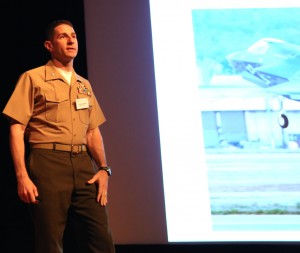
We will be reporting from Australia later during the trip, concerning the Royal Australian Air Force and MoD’s approach to defense transformation, which they call Plan Jericho.
The RAAF considers the F-35 as an entirely new type of aircraft, but its impact comes not simply from being a new type of aircraft but providing enhanced situational awareness, decision-making and spectrum dominance.
And the full value of the plane simply will not come by operating by itself as some sort of silver bullet, but operating in an effective manner with the other new platforms and with legacy systems which are themselves becoming shaped for 21st century operations.
In part, the challenge is to get past the replacement platform mentality.
The core air platforms have been or are being replaced but the task is not simply to learn the new platform and prepare for the next one in a narrowly defined functional area – fighter is a fighter, tanker is a tanker, a lifter is a lifter, an air battle manager is an air battle manger and so on down the 20th century species list – but to shape cross platform capabilities and to reshape how battle management, operations and warfare is conducted.
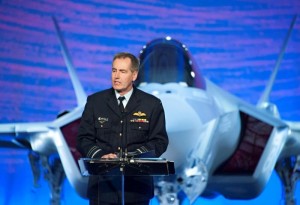
This is challenging for a small air force, which is already taxed in learning how to operate new platforms, and get them into operations.
The notion of preparing for the introduction of the F-35 and cross platform innovation will be evolved by testing new approaches to using other new platforms and leveraging them as well in new ways PRIOR to the F-35 becoming the dominant fighter in the RAAF.
In other words, the coming of the Marines to Darwin is not just about getting ground force integration better it is about interactive defense transformation. And that really is the meaning of the IOC declaration for the Marines – it is not the end of a process but the next phase in dealing with 21st century combat threats and shaping more effective combat strategies.
Visionary Marines commanders went forward trusting all in the Corps to demonstrate that they were never really on probation.
For the original Breaking Defense version see the following:
http://breakingdefense.com/2015/08/the-f-35b-from-probation-to-transformation/


